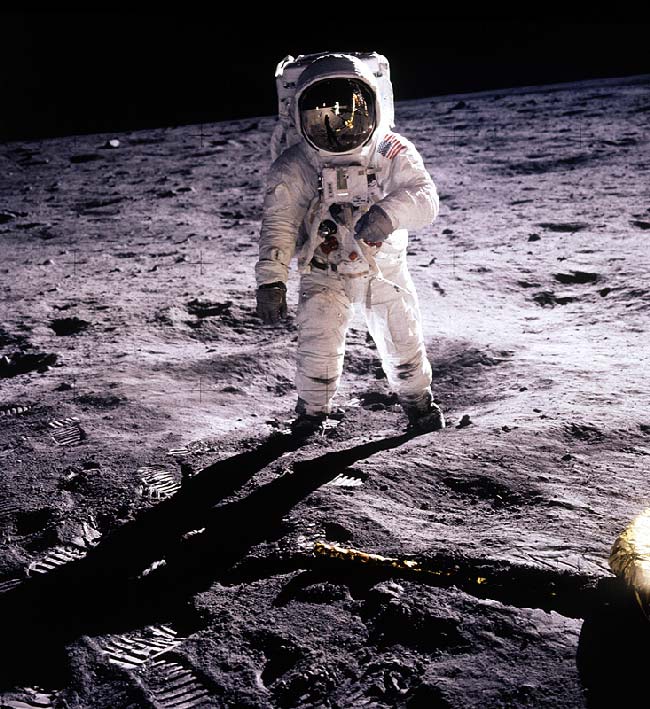Texas Educators: Neil Armstrong Not a Scientist

Is Texas nuts? Vote below.
If you thought efforts in recent years by Texas educators to undermine the well-founded theory of evolution on behalf of a religious agenda were disingenuous, this one will send your blood pressure into the stratosphere and beyond:
"A Texas Essential Knowledge and Skills review team composed of parents and teachers has suggested removing Neil Armstrong from a 'science strand' in a 5th grade social studies book," writes Eric Berger, blogging for the Houston Chronicle.
At issue: The review team says the first man on the moon was not a scientist. Wrong.
As Berger notes, Armstrong got an aeronautical engineering degree from Purdue University, and a Master of Science degree in aerospace engineering from the University of Southern California.
Armstrong biographer James Hansen, author of "First Man," wrote the Texas Board of Education thusly:
"I find your reported decision to omit Mr. Armstrong's name from the 'science strand' in Texas's fifth grade textbooks totally ridiculous and unjustified. I wonder how many of your board members actually know anything about Armstrong's career other than he was first man on the Moon? … As for him not being a 'scientist,' I dare say your Board members need a better understanding of what engineers do and how they do it, and how Armstrong was much more than a pilot; he was an engineering research pilot and astronaut whose every flight connected in important ways to the science of flying."
Get the world’s most fascinating discoveries delivered straight to your inbox.
Armstrong himself once said: "I am, and ever will be, a white socks, pocket protector nerdy engineer." And what does he think about the definition of science vs. engineering? "Science is about what is; engineering is about what can be," the nerdy astronaut said back in 2000.
Okay, so if the Texas argument is that a scientist is someone who conducts raw science, as opposed to dreamy engineering stuff, then here's a tidbit from history: On the moon, Armstrong helped set up the Early Apollo Scientific Experiment Package. And of course he helped bring back moon rocks, following scientific protocols, so they could be studied. Scientists say much of what's been learned about the moon is the result of studies conducted by Apollo astronauts and research done on the dust and rocks they brought back.
(Aside: Check out this creative account, by Armstrong, of a moon rock named "Bok" being brought to Earth for scientific purposes.)
There's another side to this, argues biology professor PZ Myers. Myers contends that the recommendation, while based on a faulty assumption, is not unreasonable because the state should lay out broad guidelines for instruction and not be involved in niggling details.
"What the curriculum should do is say that the social studies classes for that grade level should do is discuss the space program, its goals and its effects on American society," Myers writes. "It shouldn't be saying that the teacher has to do this by asking students to memorize the names of famous astronauts."
Yeah, okay. Ahem and, well, after all, we're only talking about the first man on the moon.
In The Water Cooler, Imaginova's Editorial Director Robert Roy Britt looks at what people are talking about in the world of science and beyond. Find more in the archives and on Twitter.
Robert is an independent health and science journalist and writer based in Phoenix, Arizona. He is a former editor-in-chief of Live Science with over 20 years of experience as a reporter and editor. He has worked on websites such as Space.com and Tom's Guide, and is a contributor on Medium, covering how we age and how to optimize the mind and body through time. He has a journalism degree from Humboldt State University in California.



